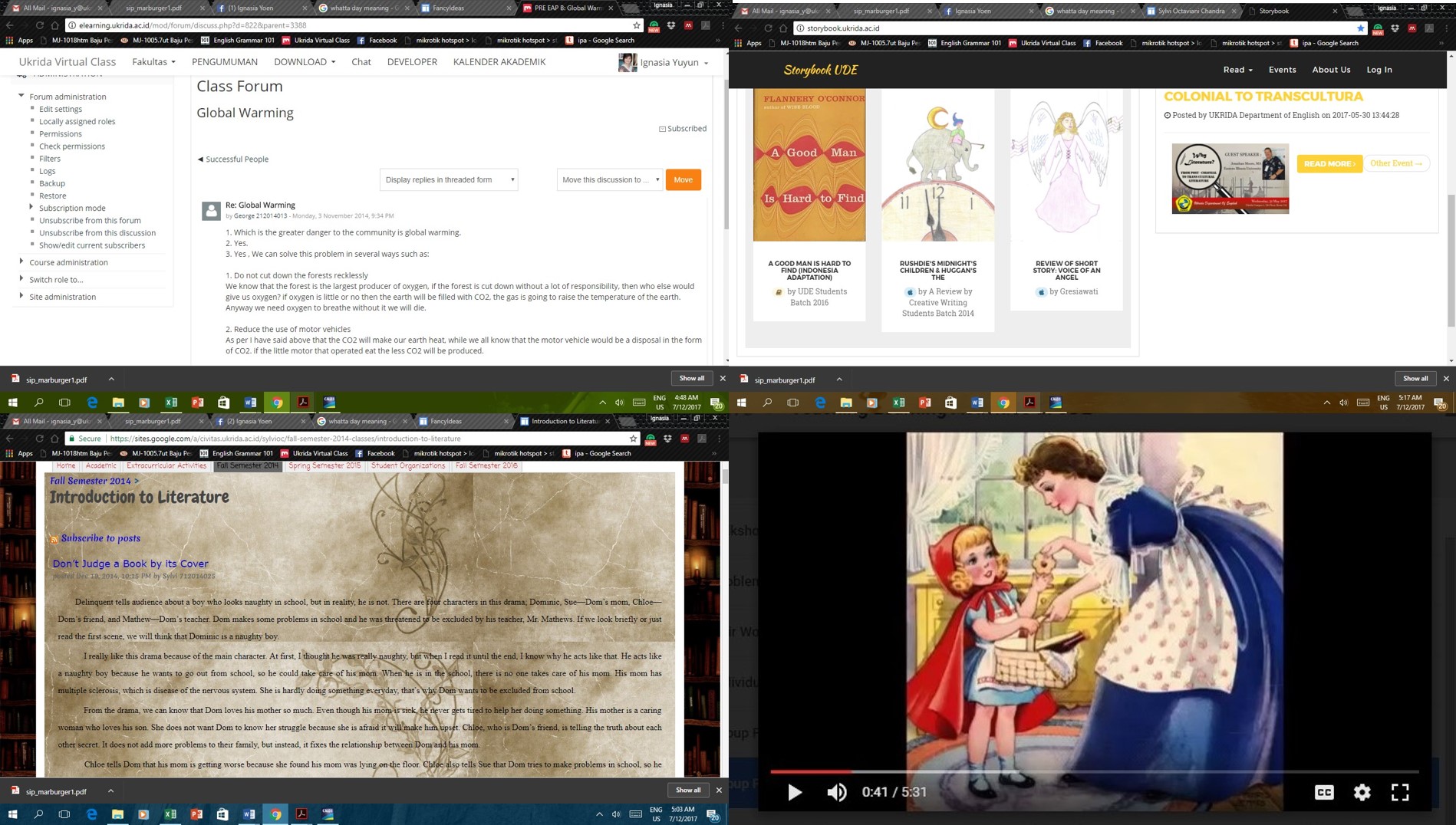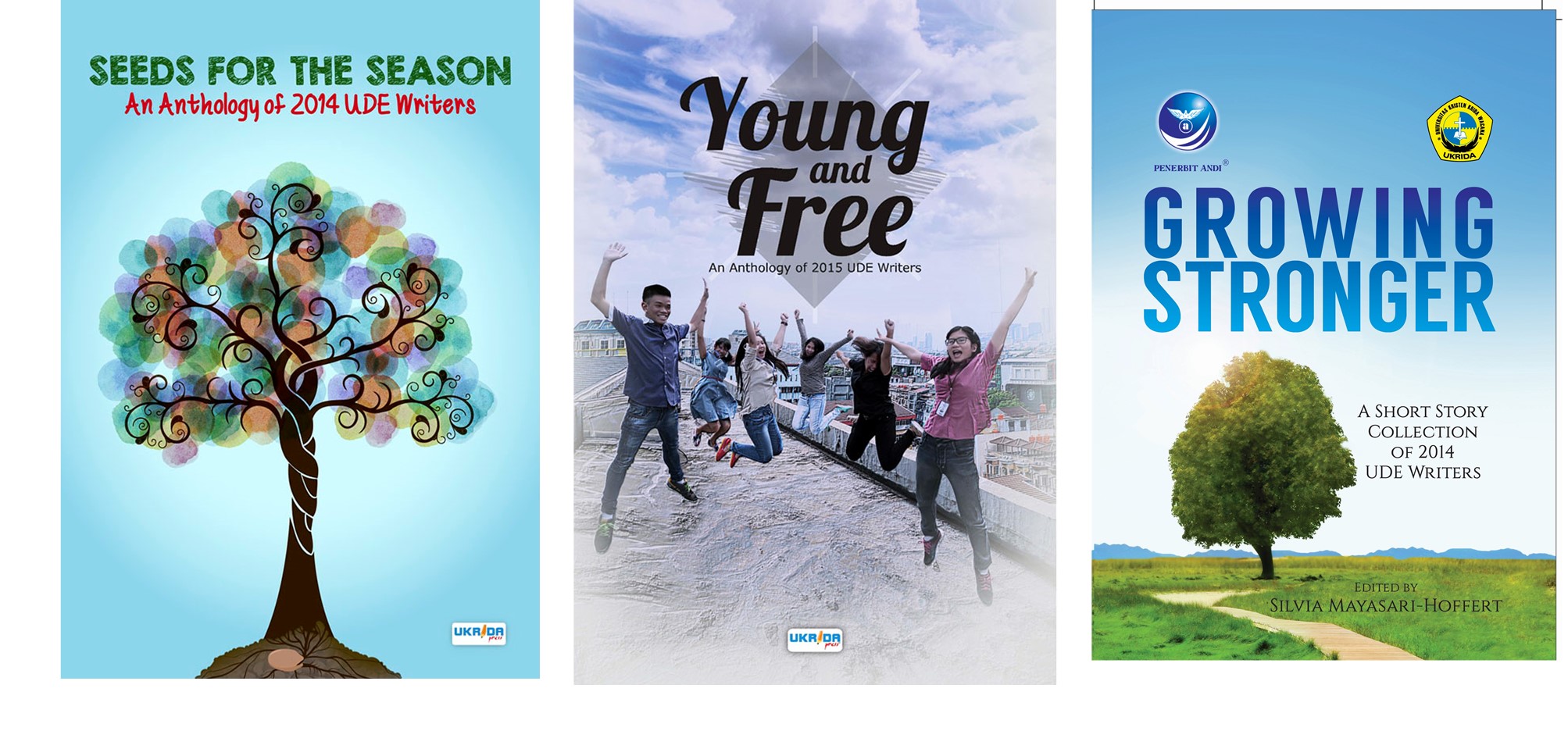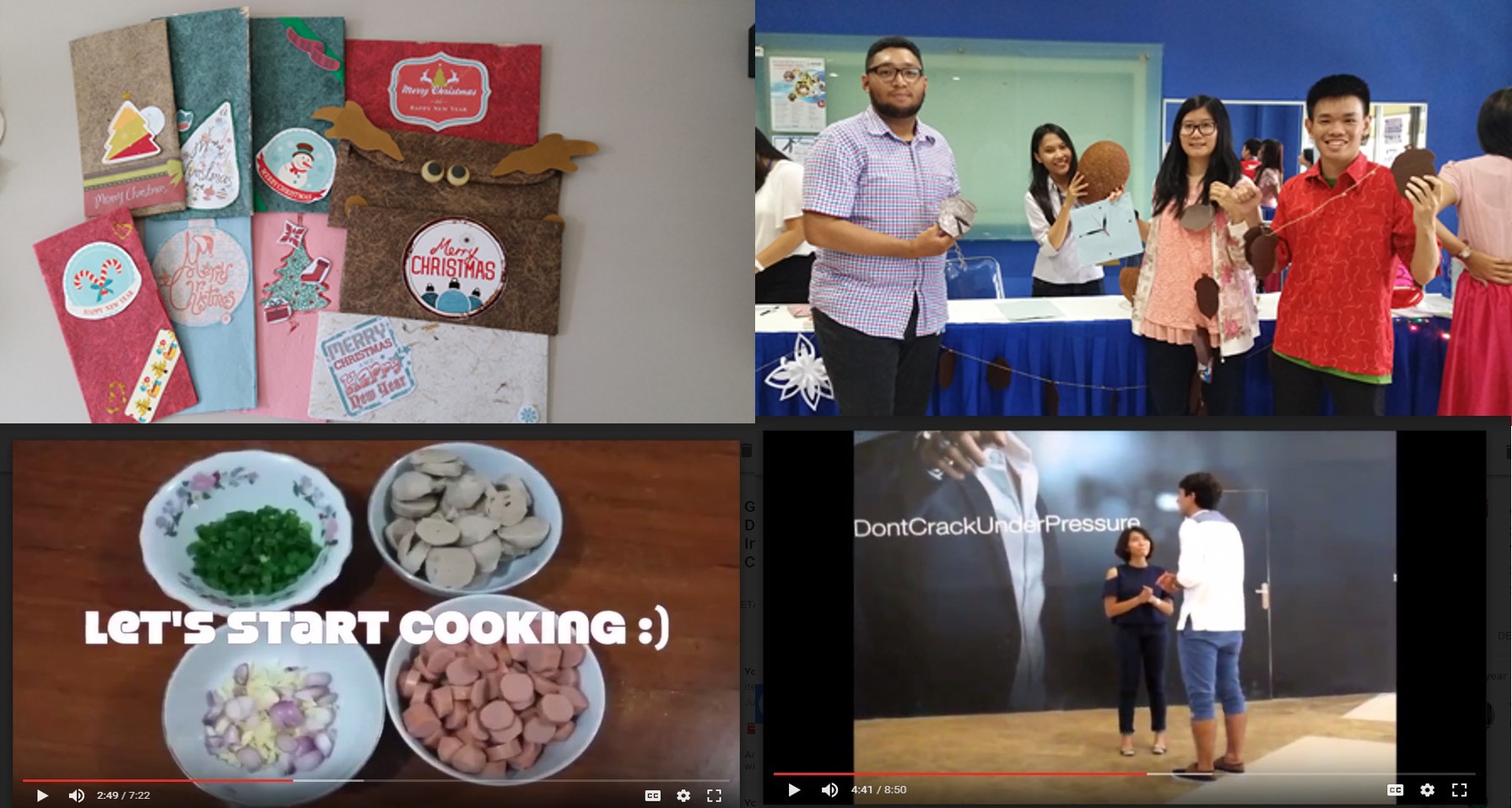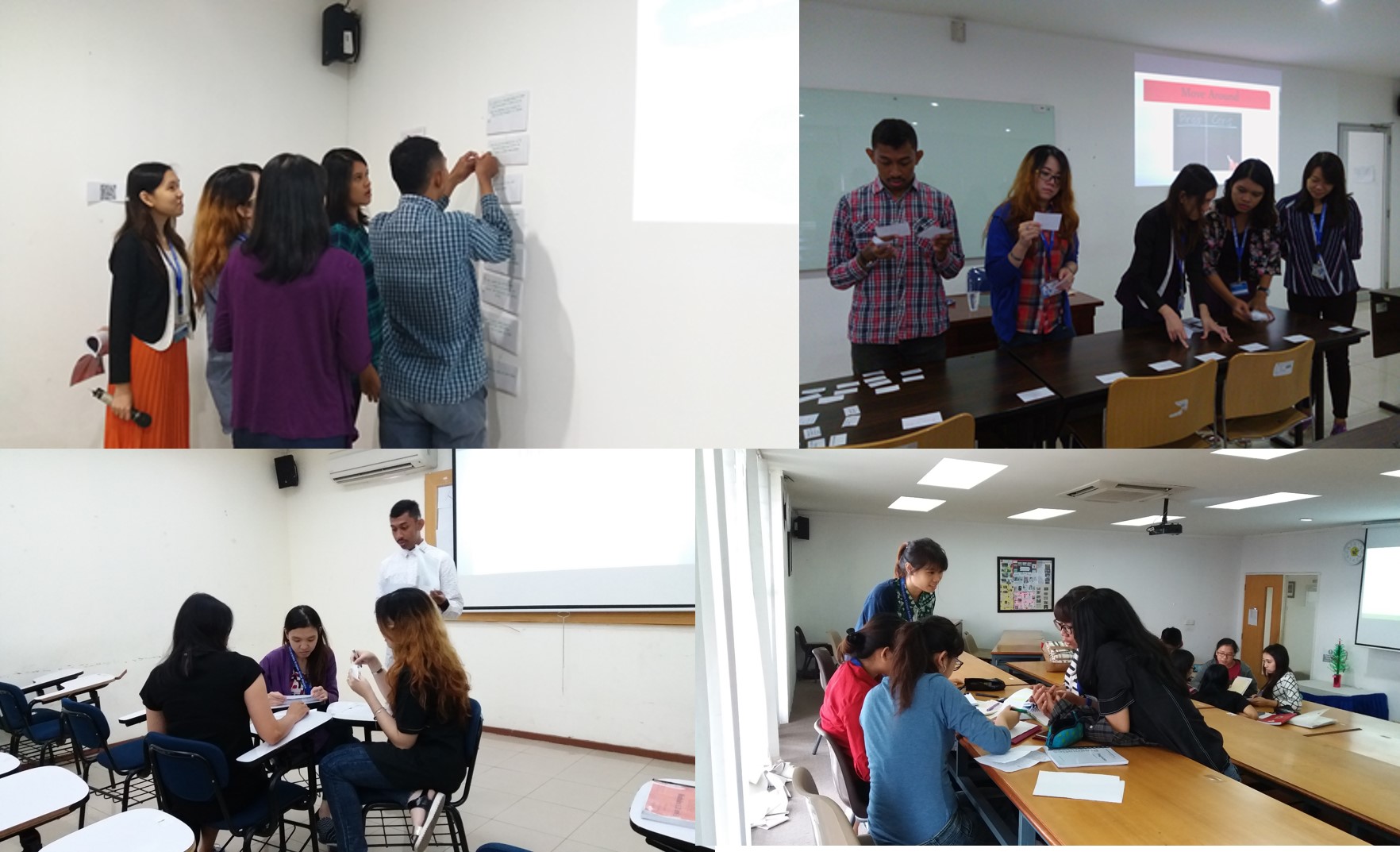Exploring Creative and Innovative Activities at UKRIDA Department of English
by Ignasia Yuyun
Creativity and innovation have been increasingly important for the development of the 21st-century knowledge society. Teachers and students are dealing with Information and Communication Technology at any level of education. At the tertiary level or higher education, teachers have been dealing with Y and Z Generation students. In this case, teachers are expected to be digital technology and internet friendly. The students are digital technology users, which makes teachers embrace technology-enhanced classroom instructions. This trend is an inevitable trend the teachers should face in this technology era.
Moreover, technologies play a pivotal role in educational change towards an innovative and creative academic environment. They could act as a platform to foster creative learning and innovative teaching and offer various opportunities for constructive change (Ferrari et al., 2010). This way, teachers should foster fun, creative, diverse, collaborative, and intuitive activities (Reimers-Hild & King, 2009) to promote student self-expression, stimulate, engage, motivate, and satisfy in a deep sense. Also, Maley and Peachey (2015) stated that the creative and innovative classroom improves student self-esteem, confidence, and self-awareness. This enhanced sense of self-worth also feeds into more committed and more effective learning.
At the UKRIDA Department of English, creative and innovative activities in EFL classrooms may be various. The followings are some best practices of creative and innovative activities:
Creative and Innovative Activities in EFL Classrooms
- Learning Management System (LMS)
UKRIDA has been using an LMS to facilitate e-learning activities; it is called Ukrida Virtual Class. To ease how to access, the university has been collaborating with Google to synchronize the applications. This virtual class is a platform for sharing learning materials, doing online exercises and tests, submitting any assignments, discussing class, etc. The lecturers can make any activities creatively and adjust any settings precisely. This virtual class is to blend between Face to Face (F2F) meetings and online learning.
2. Blog
The university has been collaborating with Google to facilitate lecturers’ and students’ blogs using the google site. Any writing projects can be published and displayed in this blog. Here, students can publish their creative writing products, reflective journals, e-portfolio, etc. Meanwhile, lecturers can monitor students’ work and give any comments and feedback.
3. Digital Story Telling
As a part of the Vocabulary and Pronunciation class, this group project aims at applying pronunciation practice and vocabulary enrichment. The students must find any children’s stories and combine the related pictures and sounds using video editor applications (windows movie maker, VirtualDub, VideoPad Video Editor, etc.).
4. E-storybook Website
This platform is intended to facilitate online publication for any creative writing products written by UKRIDA Department of English faculty members and students. As a final project of Literary Publishing class, all Creative Writing students collaborate with the Directorate of Information Technology to do this project.

The example of an LMS (left above), e-storybook website (right above and left below), digital storytelling (right below).
5. Annual Creative Writing Publication
The annual creative writing publication is an offline publication published by UKRIDA Press and Penerbit ANDI. This way is intended to monitor students’ writing skills and facilitate faculty members’ and students’ creative writing produced from English Grammar, Introduction to Literature, Literary Genre, Reading and Writing, and Creative Writing courses. These publications are then sold in UKRIDA Business Center and bookstores.

Examples of creative writing publications.
6. Annual Drama Performance
This activity is a collaboration work between Introduction to Literature Class and Christmas Celebration Committee. The students are equipped with intensive practice inside and outside the class. Since the beginning of the semester, they share the responsibilities such as director, scriptwriter, costume designer, players, etc. Then, they are expected to perform a drama at the end of the semester as a part of the Final Project.
7. Project-Based Learning
Group projects are assigned in courses such as Reading and Writing classes, Integrated Skills, and Cross-Cultural Understanding to enhance students’ creativity. The students are expected to do Project Exhibition during Christmas Celebration. From Reading and Writing III, students produced paper recycling products. Meanwhile, in the Cross-Cultural Understanding class, students are expected to make a booth displaying Christmas Celebration Traditions worldwide. Another project-based learning activity is conducting a social experiment. In this project, students are expected to ask for help from strangers. They will experience whether they are rejected or not. Another project is doing a demonstration on how to do something in the Integrated Skills class.

The example of Project-Based Products.
8. Active Learning Activities
Some active learning activities can be implemented to deepen students’ understanding of the issues involved, heighten their enthusiasm for learning, and maintain students’ focus. For example, in the ESL Teacher Knowledge class, 6th-semester students are expected to do individual teaching demonstrations in front of their classmates by applying active learning activities. The guide is given beforehand to avoid misconceptions and anticipate classroom management problems. Besides, the students are also doing teaching practice by teaching 1st-semester students in Pre-English for Academic Purposes Class. The guide is provided during the teaching preparation, and the class observation is also conducted to assess student’s teaching performance.

The example of active learning activities implementing student-centered learning.
9. Guest Lecture and Seminar Participation
To balance the theoretical concepts and actual practice, some guest lecturers and seminar participation are conducted. For concentration courses such as Translation and Interpreting classes, Creative Writing classes, and TESOL classes, the students are introduced to experts and practitioners. The students benefit from these activities to broaden their knowledge in the field with current practice and trends. Here, they can compare and analyze the theories they are learning and the practice the speakers share.
10. Educational Technology Softwares and Applications
Mobile-assisted language learning has been implemented to shift classrooms from conventional F2F one to be more flexible in time and space. Lecturers’ anxiety about missing F2F meetings due to a hectic schedule can be solved by using soft wares such as screencast-o-Matic and SnagIt screen capture.
REFERENCES
Ferrari, A., Ala-mutka, K., & Punie, Y. (2010). Creative Learning and Innovative Teaching: Final Report on the Study on Creativity and Innovation in Education in the EU Member States. https://doi.org/10.2791/52913
Maley, A., & Peachey, N. (2015). Creativity in the English Language Classroom. In British Council. https://www.teachingenglish.org.uk/sites/teacheng/files/pub_F004_ELT_Creativity_FINAL_v2 WEB.pdf
Reimers-Hild, C. & King, J.W. (2009). Six Questions for Entrepreneurial Leadership and Innovation in Distance Education. Online Journal of Distance Learning Administration, 12(4),. Retrieved September 10, 2021, from https://www.learntechlib.org/p/76602/.

Leave a Reply